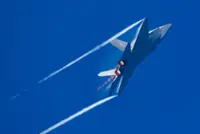The United States should keep China integrated into its aviation industry supply chains to maintain control over the country’s ability to develop, an expert told a US government advisory panel on Thursday.
The recommendation was among dozens made over several hours of testimony in a US-China Economic and Security Review Commission [USCC] hearing called to assess Beijing’s industrial ambitions under the “Made in China 2025” plan, an initiative that seeks to establish Chinese dominance in a range of industries.





